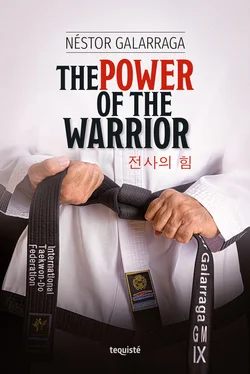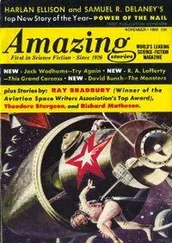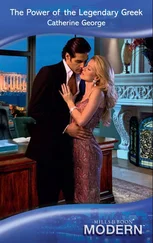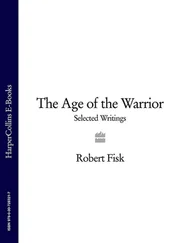It is estimated that between the years 1962 and 1975, between civilians and soldiers, one million people practiced the discipline in Vietnam. Many were the stories about how the Koreans used it in that war. In 1966, a reporter from Time wrote: “for westerners the method is as violent as it is effective” and he described many stories that are not the point here. Yet, he mentioned that all Korean soldiers, from General Chae Myung Shin in command to the last soldier, practiced Taekwon-Do —the Korean version of Karate— for 60 minutes, every day.
Simultaneously, the Korean Tiger Division was recognized as a highly qualified and brutally efficient combat unit, so much that the Viet Cong had orders to move as near the American troops as possible and to avoid combat in any way with the Korean forces. The possible explanation to this was a battle carried out during Saint Valentine´s night, in February 1967, when 1500 Viet Cong soldiers surrounded and attacked approximately 250 Korean marines, within a strongly fortified area controlled by the communists, in the province of Quảng Ngãi. The final result of the attack was a body-to-body combat in the middle of the night, between the rain and the fog, and where numbers spoke alone: 15 Koreans killed; 104 Viet Cong soldiers defeated within the perimeter and 140 outside it. The Koreans ended up surrounding those who, at the beginning, were controlling the action. There is no need to go over details, but it is worth mentioning that, from the beginning, the main objective was to attain the maximum level of effectiveness with the technique, together with a series of ideological, tactical and strategic principles. There are thousands of stories like this one where the effectiveness, the force, the speed, the precision and the resolution of the men that apply Taekwon-Do stands out.
In the 60´s, the expansion process of Taekwon-Do began and it started arriving non-stop to the different countries, as if it were part of a cultural insertion plan of the government. It was favored by two fundamental matters: on the one hand, the postwar process to which Koreans were subjected forced many to try to live Korea, since it was under the military regime of president Park Chung Hee (South Korean military man and politician that ruled the Republic of Korea by means of a dictatorship for 17 years, from 1962 to 1979), and to emigrate with the purpose of finding a new lifestyle in new lands and Taekwon-Do, to those who had practiced it for a long period of time in the army or socially, was the job alternative they found as immigrants, to develop anywhere in the world; on the other hand, the Korean intelligence services, the KCIA, used secret service agents to carry out activities in different countries, obviously, most of them were Taekwon-Do experts and many hid as instructors within the schools of “Korean Karate” and carried out quasi-criminal activities, while acting as spies or counterspies. The illegal entering into different countries of those who managed to escape from Korea was one of the main activities, while the put together the papers for their final destination, being generally North America or Europe.
Now then, many were the cases of Koreans who reported constantly what was going on in their country during the dictatorship of Park Chong Hee. Some pursued journalism and were consistently harassed by one of the three groups of intelligence, which kidnapped and deported back to Korea these people in order to be punished, tortured and, even, disappeared by the regime. At that time, there were three groups of power: the KCIA (Korean Central Intelligence Agency), the PMO (Prime Minister´s Office) and the PSF (Presidential Security Force). These three intelligence agencies orbited the president and dictator Park Chung Hee and gave him support but, at the same time, they conspired one against the other, following their own agendas and protecting their space of power. The three of them carried out intelligence service duties and conducted international operations; one would help you to escape, while the other would persecute you politically. What seems strange is that the downpour of claims and international scandals of South Korea showed the world its more brutal face, one that —up to that point— had only been attributed to the government of North Korea. As incredible as it may seem, that scenario, instead of hurting the expansion and growth of Taekwon-Do, ended up favoring it, with the exception of some countries like France, which strongly reacted against Korea. This was the process that helped the government of Korea understand that they could use Taekwon-Do as a tool for expansion and cultural insertion, since the discipline itself was not only a martial art or a sport, but a receptacle of cultural information of the Korean people, by which the native language could be taught and procedures, protocols and different cultural ways could be adopted by students. Many people from around the world started to become interested in the discipline, despite the fact that it was being perceived in many countries as an attempt of cultural action. This was later known as “the cultural other”, a policy of the Asian countries with the intention of promoting their own culture as a bridge for commercialization. Consequently, many of the great masters that we know through history and some of the famous pioneers might have probably been secret agents, working for the Korean Intelligence Service through one of these organizations, that is, for the government of Korea…
In the 70´s, a new process begins and, due to the many confrontations of General Choi with the government of Korea, the ITF moves its headquarters to Canada, where the discipline starts to develop internationally. In 1972, Korea creates WT while ITF organizes the first World Championship, in 1974. In the 80´s, two phenomena are occurring that will transform the discipline worldwide: the WT is recognized by the International Olympic Committee (IOC), an essential step for WT Taekwondo to become an Olympic sport, and this finally manages to associate Park´s regime (General Choi´s sworn enemy) with Taekwon-Do and to use the Olympics and the sport as a way to clean his image internationally. At the same time, General Choi, completely disappointed and disoriented by the news that Taekwon-Do has been recognized by the IOC, but only its WT version, puts a plan in motion to take ITF Taekwon-Do to North Korea. Because of this, he will lose many of his main (Korean) disciples, who would decide not to accompany him to North Korea and who interpreted this as Choi´s political suicide and the death of ITF. They knew that if they undertook General Choi´s risky venture, in many cases, they could probably never see their families ever again. But Choi moves forward with his plan and he doubles the stakes. He negotiates with North Korea and he develops the technique one step further —leaving those he would start calling “traitors” outdated and out of the game— and he graduates native instructors of the 4th Dan, thus, controlling directly the existing national federations, unlike the predictions of the government of South Korean and his former students.
In the 90´s, ITF Taekwon-Do becomes an amazing discipline due to its extremely high level of efficiency and refined esthetics. It is likely that Choi, who was still being criticized for his way of conducting Taekwon-Do, found during those years the point of balance between esthetics and efficiency. Its enormous popularity made of it a martial art without precedents and of him, particularly, the founder of the last Martial Art. This has a very particular connotation; I personally believe that Taekwon-Do ITF style is historically the last Martial Art. There will be new methods, systems, styles, sports grounded on the different martial disciplines, but there will be no more martial arts per se. These belong to a particular process in history and they played a part in the wars where body-to-body combat was a fundamental element of the battlefront.
Читать дальше












